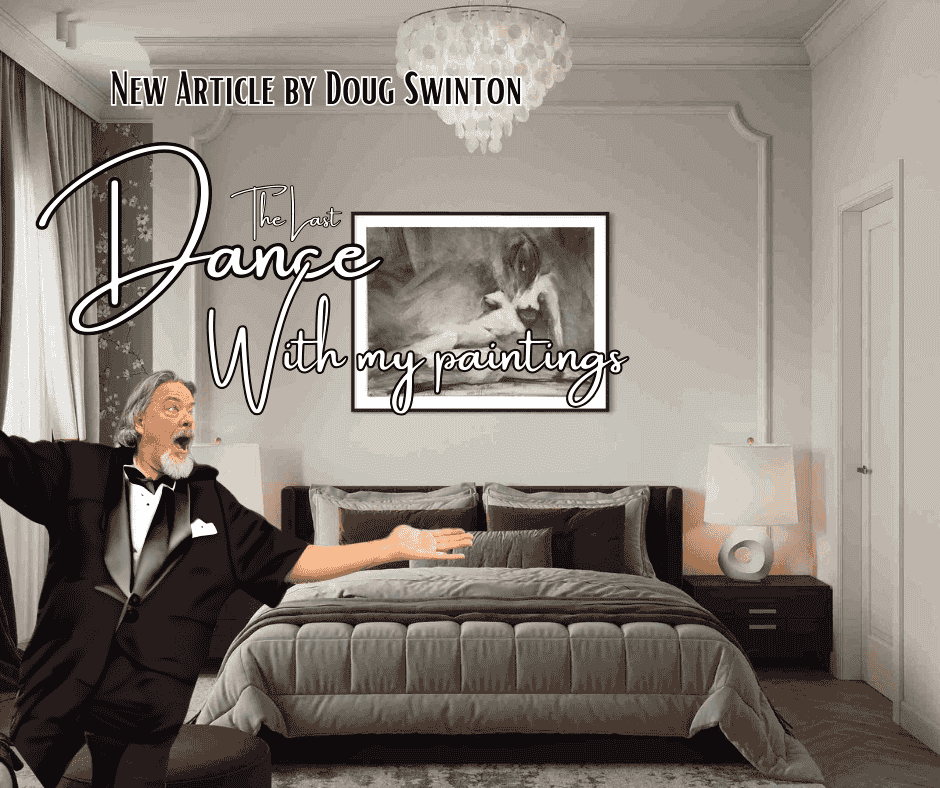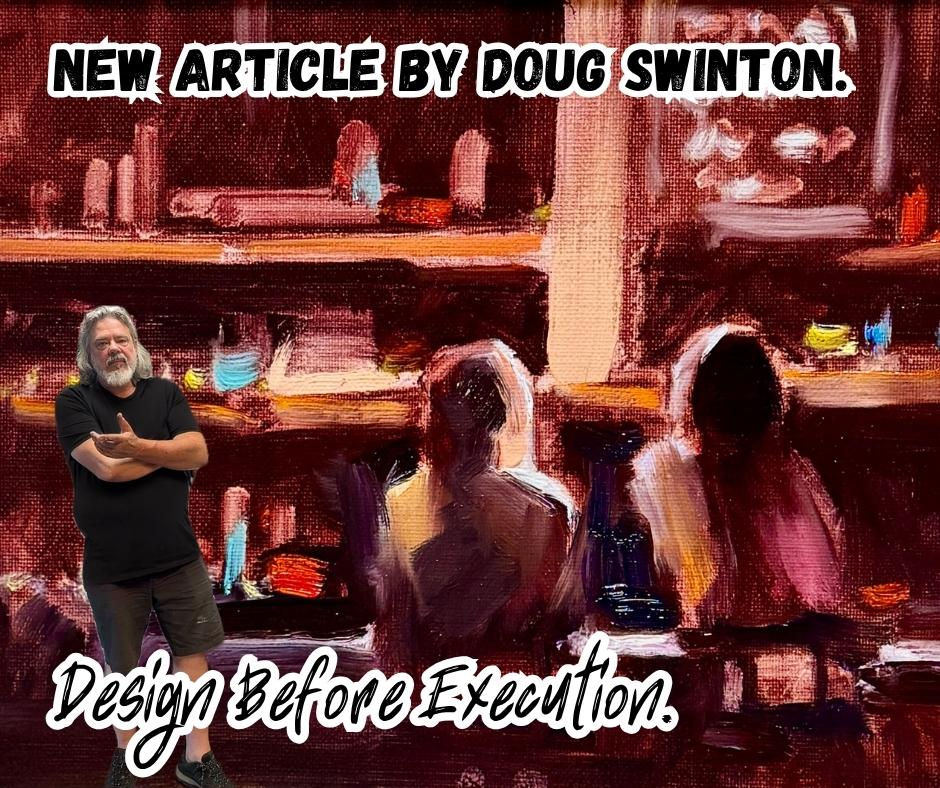Why do I get worse the longer I paint?
- Doug Swinton

- Aug 9, 2018
- 4 min read
Updated: Mar 21, 2021
How do you know if you're making progress?

I recently read Adeline Halverson’s blog post “WHY DO I GET WORSE THE LONGER I PAINT” and because I frequently hear this question myself I asked Adeline for permission to share the article with you. I’m sure you will agree she tackles a lot of painting issues that need to be addressed.
Enjoy our guest blogger Adeline Halverson and don’t forget to leave her a comment below…
Has this happened to you? You did your first few paintings and you thought to yourself "Gee, I can do this. It looks OK. I need more practice, but I'm pleased with the results for a first try". And then, a few paintings later, all of a sudden the paintings look awful! Nothing seems to work, you've got ideas but can't seem figure out how to get them on canvas, the colours don't look right, you'd forgotten completely how to draw, etc. The longer you paint the worse you seem to get!
First of all, let me say, this is common. It happened to me, and to pretty much every artist I know. This can happen for two reasons:
1). You just think you're getting worse. Your eyes are getting much better at judging. With each painting you do, you see more, you understand more about how the paint works, you begin to study other artists more and judge yourself more harshly. As well as happening in the early stages, this can rear it's ugly head again any time during your career, when you're feeling a little short on ideas, when you're trying to work at a time when you're overtired, when you've done a little too much reading or studying of other artists and instead of spending time painting.
It's also common to take on bigger and bigger challenges. That can make it see like you're backsliding, even though you are learning and growing.
2). The second possibility is that you actually have gotten worse! Let me explain.
Because you can see more, you were noticing more colours and more values, particularly in the shadow areas and putting them there, and losing track of which areas are in light which areas are in shadow. Adding too much colour or using too light a value in the reflected light areas of shadows is one of the main problems painters have. Check the painting you're working on to make sure that the areas in shadow stay in shadow. Don't be seduced by too much light and colour, particularly in the shadow areas if your goal is to keep the image realistic. If you're having difficulty seeing this, snap a photo of your painting and either print it out in black-and-white or change it to black-and-white (the camera on your phone, if you have one, should do this) and check your values.
If you're studying the work of too many other artists you might be losing "yourself" and instead trying to emulate someone else and missing the mark. If you're going to experiment, try to pick one thing at a time, for example:
in this painting I am going to work on keeping strong contrast between light and shadow
in this painting I'm going to try working with a really limited palette
in this painting I'm going to concentrate on establishing a distinct centre of interest.
Give yourself a focus and it will be a little easier to grow, one step at a time. Rome wasn't built in a day!
With any of these problems, the main solution is to paint. Forget about reading art books and magazines for a while if that's your issue. If a painting hasn't turned out the way you like, set it aside for a few days and then look at it with fresh eyes. You may see an easy fix to the problem you are having. You don't necessarily have to go back to painting on it (there's nothing wrong with moving on to the next one and just calling it a learning experience).
Give yourself time to learn and grow, no matter which stage you are at in your painting journey. We all have ups and downs. Some days things just flow, and some days you're completely stuck.
Many of the artists I know, even long time professionals, are currently going through an evolution, a time of change, a feeling that what used to work doesn't anymore. It seems to be something in the air this year! If that's the case, rest if you need to, but continue to explore. Try little paintings. Experiment with a different medium. Play and put the joy back in your work. Take a break if you need to. Or replenish your spirit first and then come back to the easel.
Most challenges with painting can be overcome by simply painting. You can read, study, take workshops etc. but ultimately, you have to learn how you apply the paint, how the world in front of you translates for you. It's different for everyone. Keep painting. It'll all work out. You will improve. Trust me.
Adeline Halverson
Adeline Halvorson Artist Bio
Adeline Halvorson knew at an early age that she wanted to be an artist. In her rural upbringing, animals, especially horses, played a very important role. Her entire working life has been dedicated to her art career. Through experimentation, endless reading and hours of practice, she continually hones her techniques in acrylic or oil.
She spends most of her time researching and creating the paintings she markets to a growing group of collectors. She enjoys the variety of diverse subjects - floral, still life, dogs, or a childhood scene, and most often, her favourite equine subject matter. Years of riding and grooming horses has given Halvorson a knowledge of anatomy and muscle movement that her painting skills bring to life on the canvas. The shapes and movement of muscle, variety and texture of harness and trappings, as well as the horse and its interaction with its human counterparts provide endless artistic inspiration for one who grew up with a love for one of the world’s most beautiful animals.
Adeline Halvorson - Artist Website
Adeline Halvorson - Artist Blog








Stay organized and efficient with software from getintopc.
YasDL همواره به نیاز کاربرانش توجه میکند.
Không chỉ là nơi giải trí, 32Win còn là điểm đến của những người đam mê thể thao thực thụ. Khi truy cập 32 win bạn sẽ được tiếp cận với nền tảng cá cược chuẩn quốc tế, bảo mật cao và ưu đãi hấp dẫn. 32win football mang đến trải nghiệm chân thật với hệ thống cược linh hoạt, giúp người chơi sống trọn từng pha bóng, từng giây phút kịch tính.
LC88 luôn mang đến cho người chơi những chương trình ưu đãi khổng lồ, trong đó có thưởng 18.888K cho hội viên mới. Truy cập ngay lc8800 com để trải nghiệm cá cược trực tuyến đẳng cấp và an toàn tuyệt đối.
https://789f.mba/ mang đến cho người chơi không gian giải trí an toàn, tiện lợi và hiện đại. Nền tảng 789F sở hữu giao diện thân thiện, tốc độ truy cập nhanh và hệ thống bảo mật tiên tiến. Người chơi có thể đăng ký, nhận thưởng và tận hưởng các chương trình ưu đãi đặc biệt mỗi ngày. Với phong cách phục vụ chuyên nghiệp và minh bạch, 789F là thương hiệu uy tín được đông đảo người chơi tin chọn.